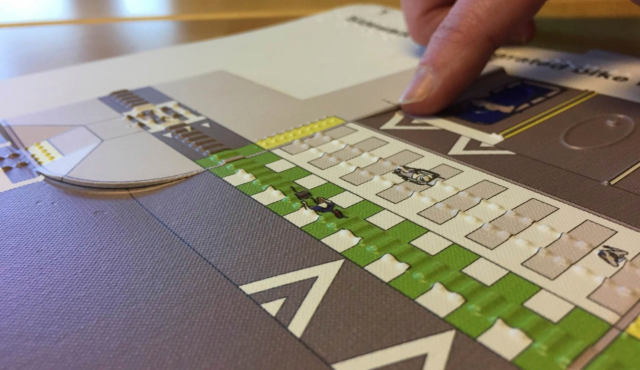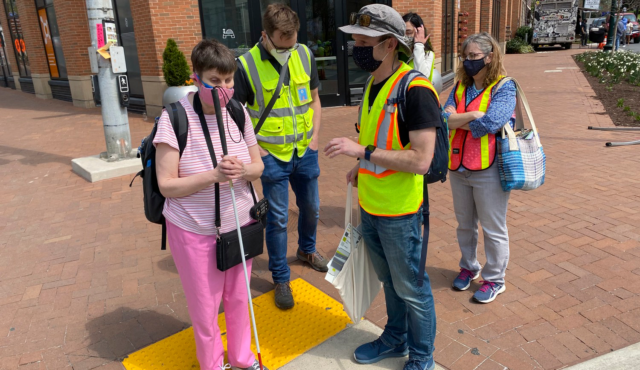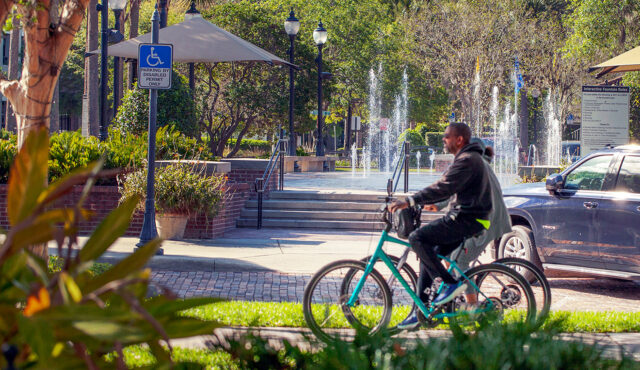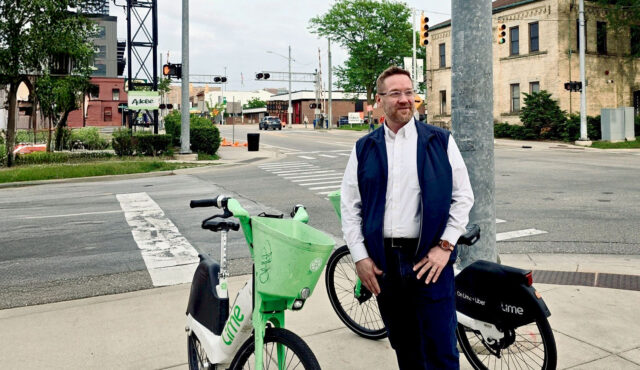By JAMES ELLIOTT AND JEREMY CHRZAN
This week the U.S. Access Board concluded its rulemaking and published the Accessibility Guidelines for Pedestrian Facilities in the Public Right-of-Way, commonly referred to as PROWAG. These guidelines are effective September 7, 2023, and will become enforceable when adopted by the U.S. Department of Transportation and the U.S. Department of Justice. The finalization of PROWAG marks a major milestone in the disability rights movement. These guidelines, which have been decades in the making, address a significant gap in the regulatory framework for implementing the Americans with Disabilities Act of 1990.
Why it Matters
Disability affects everyone at some point in their lives, and we have an ethical and legal obligation to ensure a person with disabilities has the same access as anyone else. The public right-of-way is critical to this access because it’s how people travel to destinations. It is also a destination in its own right for exercise, leisure, socializing, and gathering.
PROWAG implementation will result in more accessible streets and sidewalks for people with disabilities and greater consistency and predictability in design, which is especially important for people with disabilities.
With its adoption, jurisdictions will need to comply with PROWAG guidelines when constructing new streets and shared-use paths and reconstructing or modifying existing streets or paths.
WHAT IT COVERS
PROWAG provides accessibility guidelines for many critical elements of the public right-of-way, including:
- Pedestrian access routes along streets, sidewalks, and shared-use paths
- Alternate pedestrian access routes during construction
- Curb ramps and blended transitions
- Detectable warning surfaces
- Pedestrian signal phase timing
- Accessible pedestrian signals and pedestrian pushbuttons
- Pedestrian crossing islands
- Roundabouts and channelized turn lanes
- At-grade rail crossings
- Transit stops and shelters
- Accessible on-street parking
- Passenger loading zones
- Signs
- Street furniture
- And more!


The adopted PROWAG differs from the draft PROWAG in multiple ways. Some key differences include:
- The adopted PROWAG modifies requirements for pedestrian crossings at multilane roundabouts to provide additional flexibility. Instead of requiring a traffic signal, the modified guidance provides several options, including a traffic signal, pedestrian hybrid beacon, RRFB, and/or raised crosswalk.
- The adopted PROWAG clarifies the placement of detectable warning surfaces. For example, detectable warning surfaces are now required (rather than recommended) at all driveways with stop or yield signs.
- The adopted PROWAG better defines what constitutes an alteration of the public right-of-way that would trigger a need to upgrade in compliance with this guidance.
- The adopted PROWAG provides additional clarity regarding the grading of crosswalks at different intersection types (e.g., signalized, stop/yield controlled, and uncontrolled.)
- Instead of referencing sections of the Manual on Uniform Traffic Control Devices (MUTCD), the adopted PROWAG provides guidance on pedestrian signal phasing timing, push buttons, locator tones, and audible messages at signals and RRFBs directly in the text.
- The adopted PROWAG provides additional clarity regarding the design of alternative pedestrian access routes during construction.
- The adopted PROWAG revises the guidance for accessible cross slopes from 2% to 1:48 or 2.1% to align with guidance in the Americans with Disabilities Act (ADA) and the Architectural Barriers Act (ABA).
The preamble of the published document also provides useful information about the reasons for these changes.
What it Doesn’t Cover
While PROWAG is a significant leap forward for accessible design in the public right-of-way, it isn’t comprehensive. There are many important topics that either aren’t covered or aren’t covered in great depth. Examples include:
- Addressing the needs of people with intellectual and developmental disabilities.
- Meeting the needs of cyclists with disabilities.
- Designing separated bicycle lanes, floating bus stops, shared spaces, and other newer or non-conventional designs.
- Using other tactile surfaces such as directional indicators or trapezoidal delineators.
- Designing interim projects, such as flex post curb extensions and pedestrian crossing islands.
- Engaging people with disabilities in street planning and design.
Furthermore, other important topics, such as the need to provide pedestrian signals at all signalized intersections, were not fully realized in the guidance.
HOW TOOLE DESIGN CAN HELP
Accessible and inclusive design is central to Toole Design’s mission as a company and to our New E’s approach to transportation that focuses on ethics, equity, and empathy.
Over the past 20 years, we’ve developed a wealth of experience in accessible and inclusive design. We’ve produced accessible design guidance for FHWA, AASHTO, and ITE, as well as multiple state and local jurisdictions and transit systems. We created a resource guide on engaging people with disabilities in street planning and design. We’ve also led ADA accessibility audits and transition plans for communities of all sizes, and have delivered accessible design trainings for cities, MPOs, and professional associations.
We can help you understand and apply the adopted PROWAG and other fundamental practices to make your streets even more accessible, comfortable, and inclusive.
We offer half-day, full-day, and multi-day pedestrian accessibility trainings covering ADA, PROWAG, and other accessible design best practices. We can also tailor trainings to your community’s needs or include additional pedestrian accessibility issues such as inclusive bicycle facilities, floating bus stops, and engaging people with disabilities.
All our courses incorporate an understanding of the challenges people with disabilities face that are often missing from design guidance documents or overlooked in the planning and design process.
Interested in learning more about Toole Design’s courses on accessible and inclusive design? Please contact Jeremy Chrzan, Toole Design’s Multimodal Design Practice Lead to discuss your training needs.



